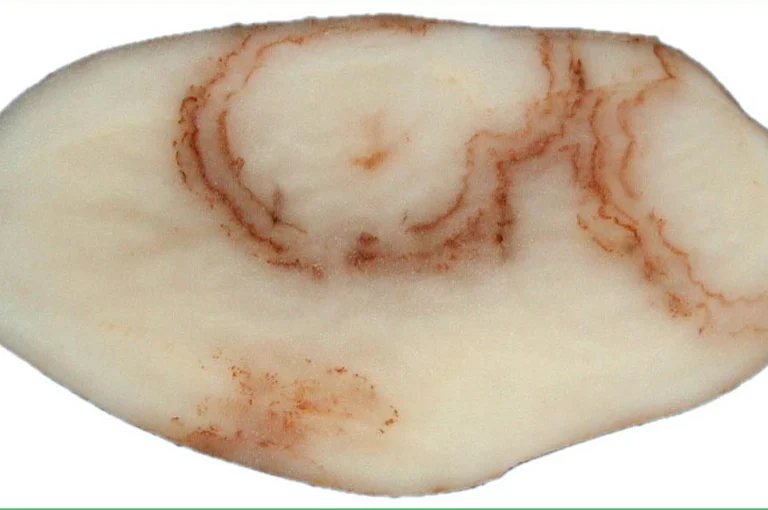
Spraing - Mop Top
Potato Mop Top Virus (PMTV)
Pathogen
Virus
Hosts
Potatoes and certain weed species such as black nightshade
Symptoms
Brown arcs in the tuber flesh and raised rings on the tuber surface, but no foliage symptoms in the year of infection. Plants grown from infected seed have stunted stems (mop top), plus yellow spots and 'V' shaped markings on the leaves.
Development
The virus is carried by spores of the powdery scab fungus (Spongospora subterranea) which may be introduced with the seed tuber or survive in the soil from previous crops. In the soil it can survive inside the fungal spore for over 15 years.
Favourable Factors
Cool, damp soils in June/July. Foliage symptoms are particularly apparent in cold springs.
Importance
30-50% of plants from infected tubers exhibit foliage symptoms, but the disease is generally of little economic importance in the UK.
Control
There are no known resistant varieties
Adopt a rotation of 5 to 6 years
There is no chemical treatment available



